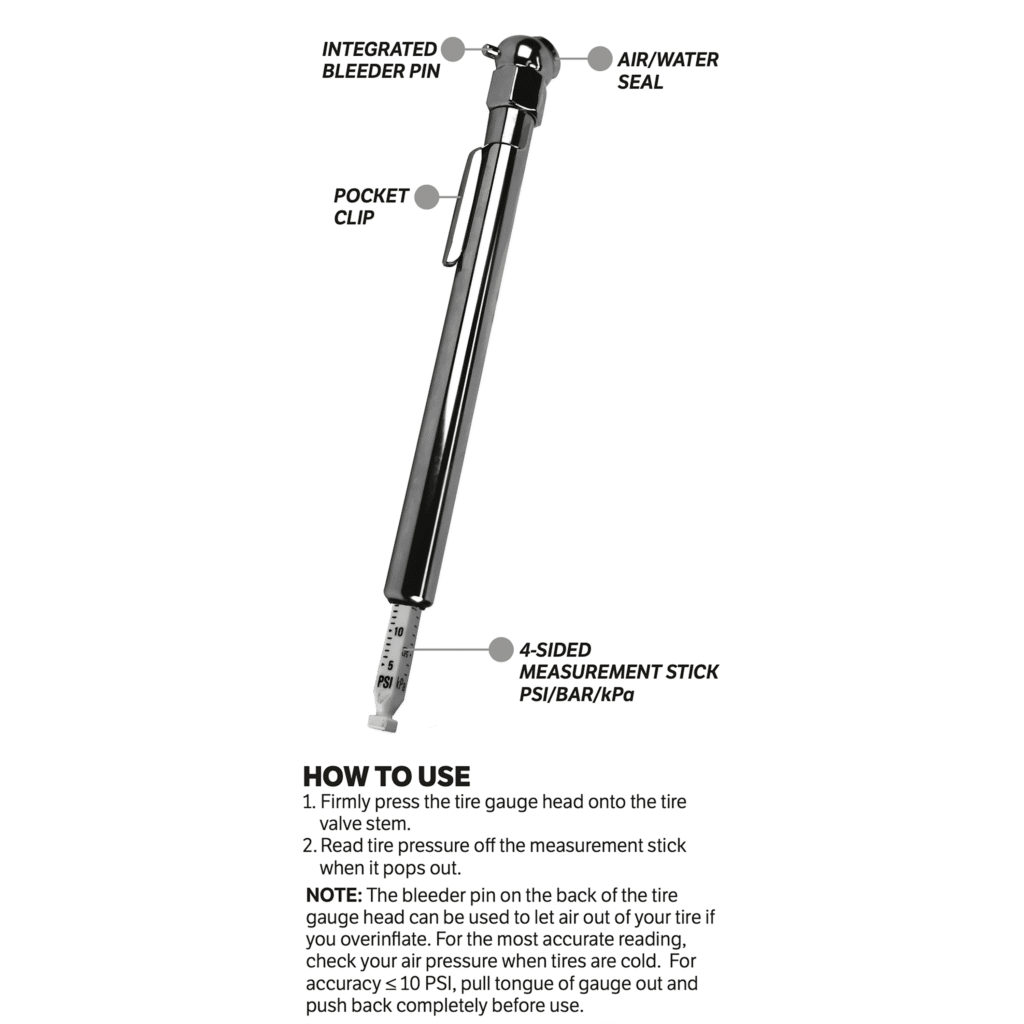
Maintaining proper tire pressure is crucial for ensuring optimal vehicle performance, safety, and fuel efficiency. A tire gauge is a simple yet indispensable tool that allows you to accurately measure the air pressure inside your tires. Understanding how to read a tire gauge correctly empowers you to keep your tires inflated to the recommended levels, maximizing their lifespan and enhancing your driving experience.
This comprehensive guide will walk you through the fundamentals of tire gauges, explain how to read them effectively, and provide insights into understanding PSI and kPa measurements. We’ll also emphasize the importance of consulting your vehicle’s owner’s manual for specific tire pressure recommendations.
Tire Gauge Basics
A tire gauge is a small, handheld device designed to measure the air pressure within a tire. They come in various types, including analog gauges with a needle that moves across a calibrated scale and digital gauges that display the reading electronically. Both types are equally effective but offer different levels of precision and ease of use.
Analog gauges often provide a more intuitive visual representation of the pressure, while digital gauges tend to be more accurate and feature additional functionalities like backlight or unit conversion. Regardless of the type you choose, ensure it is calibrated correctly for accurate readings.
Choosing the Right Tire Gauge
When selecting a tire gauge, consider factors such as accuracy, ease of use, and durability. Look for gauges with clear markings and a comfortable grip. Digital gauges often offer features like backlight illumination and unit conversion (PSI to kPa), enhancing their usability in various conditions.
How to Read a Tire Gauge
Using a tire gauge is straightforward. First, locate the valve stem on your tire – it’s a small protrusion usually found near the wheel rim. Next, firmly press the tip of the gauge onto the valve stem until you hear a hiss of escaping air. This indicates that the gauge is connected and reading the pressure.
Once the gauge stabilizes, read the displayed value. The reading will be in pounds per square inch (psi) or kilopascals (kPa), depending on the type of gauge you are using. Ensure you understand which unit your gauge displays to avoid confusion.
Understanding PSI and kPa
PSI stands for pounds per square inch, a common unit of measurement for tire pressure in the United States. kPa stands for kilopascals, a metric unit used in many other countries. Both units represent the force exerted by the air inside the tire against its walls.
1 psi is equivalent to 6.895 kPa. When checking your tire pressure, pay attention to the unit displayed on your gauge and ensure it aligns with the recommended pressure specified in your vehicle’s owner’s manual.
Recommended Tire Pressure
Every vehicle has a specific recommended tire pressure range outlined in its owner’s manual. This range is determined by factors such as the vehicle’s weight, size, and intended use.
Adhering to the recommended tire pressure ensures optimal handling, fuel efficiency, and tire lifespan. Underinflation can lead to increased rolling resistance, reduced fuel economy, uneven tire wear, and even blowouts. Overinflation, on the other hand, can result in a harsher ride, decreased traction, and increased risk of punctures.
Vehicle Owner’s Manual
Your vehicle’s owner’s manual is your ultimate guide for understanding the recommended tire pressure for your specific make and model. It will typically list the recommended pressures for both front and rear tires, as well as any variations based on load or driving conditions.
Conclusion
Mastering how to read a tire gauge is an essential skill for every vehicle owner. By understanding the basics of tire pressure, using a gauge correctly, and consulting your owner’s manual for specific recommendations, you can ensure optimal vehicle performance, safety, and fuel efficiency. Remember to check your tire pressure regularly, at least once a month, and adjust accordingly to maintain proper inflation levels.
